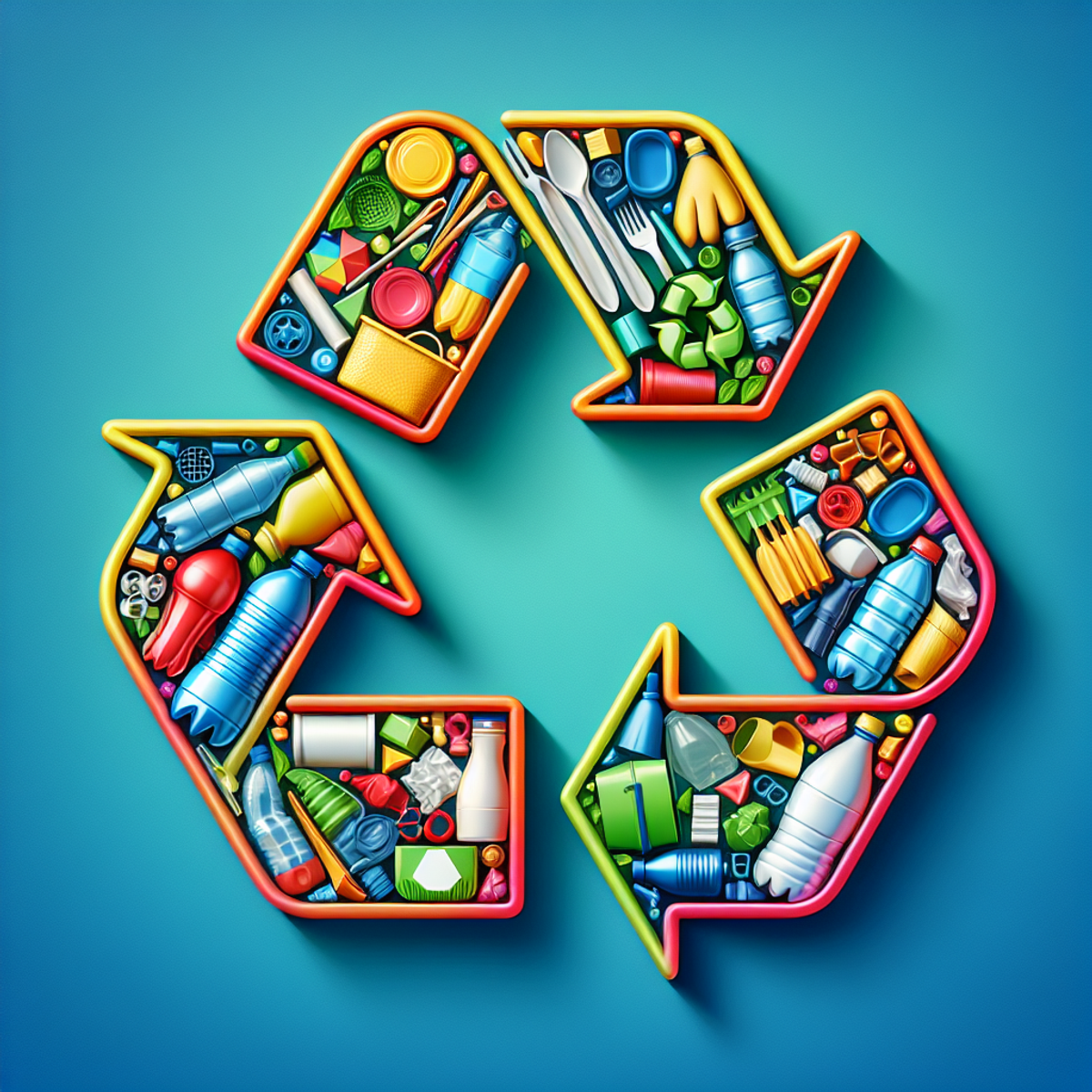Introduction
Plastic waste is a big problem for our planet. Recycling plastic helps manage this waste and turn it into something useful. Plastic recycling machines play a crucial role in this process, making it easier to handle and recycle different types of plastic.
We’ll cover various types of plastic recycling machines in this guide, including:
- Washing lines: Clean the plastic waste.
- Drying machines: Remove moisture from the plastic.
- Labeling machines: Help identify different plastics.
- Packaging machines: Pack recycled plastic for shipping.
This comprehensive guide aims to help beginners understand how these machines work and why they’re vital for our environment.
Additionally, if you’re interested in exploring other aspects of the plastic industry, we also have a comprehensive guide on plastic injection molding machines. These machines have revolutionized the manufacturing industry by enabling the mass production of complex plastic parts with high precision and efficiency.
Moreover, we have an informative article on the journey from plastic waste to pellet sales, which outlines the entire process of converting plastic waste into pellets that are sold for reuse. This method has proven effective in reducing environmental threats caused by plastic pollution.
Why Plastic Recycling is Important
Plastic waste has a significant impact on the environment:
- Pollution: Plastics often end up in oceans, rivers, and forests, harming wildlife and marine life.
- Landfills: Plastic takes hundreds of years to decompose, leading to overflowing landfills.
- Toxicity: As plastics break down, they release harmful chemicals that can pollute soil and water.
Plastic recycling plays a crucial role in addressing these issues. By reprocessing used plastic into new products, we reduce the amount of waste in landfills and oceans. This process helps:
- Lower pollution levels
- Decrease the need for raw materials
- Save energy compared to producing new plastic from scratch
For future generations, plastic recycling offers numerous benefits. It conserves natural resources and reduces greenhouse gas emissions. Additionally, it fosters a more sustainable lifestyle by promoting the reuse of materials.
To better appreciate the role of plastic recycling machines in this vital process, it’s important to understand how different types of plastics are identified and processed. You can start by learning about how to identify different types of plastic, which will help you make informed decisions about recycling at home or in your community.
By understanding the plastic extrusion process, we can gain insights into how recycled materials are transformed into new products. Plastic extrusion is a highly efficient and versatile manufacturing technique used to create a wide variety of plastic products. This involves melting plastic material and forming it into continuous profiles or shapes, which can be cut to desired lengths or further processed.
Every effort counts. When we support plastic recycling initiatives and use advanced recycling technologies like plastic extruders, we contribute to a healthier planet for everyone.
Understanding the Basics of Plastic Recycling Machines
Plastic recycling machines play a crucial role in transforming plastic waste into reusable materials. This process begins with collection and sorting. To ensure successful recycling, it is essential to have efficient collection methods and effective sorting techniques in place.
Collection Methods
There are various ways to collect plastic waste:
- Kerbside Collection: Recyclable plastics are placed in designated bins outside homes for pickup by waste management services.
- Recycling Centers: Facilities where individuals can drop off their plastic waste for recycling.
- Deposit Return Schemes (DRS): Consumers return used plastic bottles to retailers in exchange for a small refund.
- Take-back Schemes: Retailers take back used plastic products from consumers, ensuring they get recycled properly.
Each method ensures that plastic waste is gathered efficiently, setting the stage for the next step: sorting.
Sorting Techniques
Accurate sorting of plastic waste is vital for effective recycling. Different techniques are employed to separate plastics:
- Manual Picking: Workers sort plastics by hand on conveyor belts, separating them based on type and color.
- Trommels: Large rotating drums with holes of varying sizes help separate materials by size.
- Optical Sorters: Advanced machines utilize light sensors to distinguish between different types of plastics.
- OCC Screening: Old Corrugated Containers (OCC) screens separate large, flat pieces of cardboard from smaller items like plastic bottles.
Proper sorting ensures that only clean, uncontaminated plastics move on to the subsequent stages of recycling, enhancing efficiency and quality throughout the process.
Understanding these basics emphasizes the importance of each step involved in turning plastic waste into valuable resources. Sorting ensures the identification and correct separation of different types of plastics, enabling effective recycling.
For a more comprehensive understanding of how these techniques fit into the broader recycling journey, explore From Bottles to Pellets: The Journey of Plastic Recycling.
Moreover, to delve deeper into sustainable practices and their impact, visit Sustainable Development: Creating a Green Future for Earth.
Reprocessing and Extrusion
Washing Lines and Drying Machines
Plastic recycling machines, such as the Recycled Plastic Extrusion Machine from JianTai, play a crucial role in the reprocessing stage. Washing lines are essential for cleaning plastic waste, removing contaminants like dirt, labels, and residues. This step ensures that the plastic is clean before it is reprocessed. Drying machines then remove any remaining moisture from the washed plastic, preparing it for the next stage: extrusion.
The Extrusion Process
The extrusion process is pivotal in creating new plastic pellets. Here’s how it works:
- The cleaned and dried plastic waste is fed into an extruder.
- Inside the extruder, the plastic is heated until it melts.
- The molten plastic is pushed through a die to form long strands.
- These strands are cooled and cut into small pellets.
These recycled plastic pellets can be used to manufacture new products, such as bottles, containers, and even clothing fibers.
Use Cases for Recycled Plastic Pellets
Recycled plastic pellets have numerous applications in various industries:
- Packaging: Bottles, containers, and films.
- Textiles: Clothing fibers made from recycled PET.
- Construction: Pipes, roofing tiles, and insulation materials.
Exploring these steps highlights how washing lines, drying machines, and the extrusion process contribute significantly to effective plastic recycling. Additionally, owning a plastic recycling machine can also have financial benefits while contributing to the environment. Furthermore, it’s important to understand the impact of plastic waste on Earth in order to take necessary actions to reduce plastic use and help protect the environment with key statistics.
Types of Plastic Recycling Machines
Plastic recycling equipment plays a crucial role in transforming waste into reusable materials. Here are some key machines used in the recycling process:
Washing Lines
Washing lines clean plastic waste to remove contaminants such as food residue, dirt, and labels. These machines often include several stages:
- Pre-wash: Removes large debris and loose dirt.
- Hot Wash: Uses heated water and detergents to break down adhesives and oils.
- Rinse: Ensures all cleaning agents and remaining contaminants are washed away.
Drying Machines
After washing, drying machines remove moisture from the plastic waste. This step is vital for preventing defects in the recycled material. Methods include:
- Centrifugal Dryers: Spin the plastic at high speeds to force out water.
- Thermal Dryers: Use heat to evaporate moisture.
Labelling Machines
Labelling machines apply or remove labels from plastic containers. Proper labelling ensures that sorted plastics can be easily identified and processed correctly. Techniques include:
- Heat Transfer Printing: Melts ink onto the plastic surface.
- Adhesive Labels: Stickers that can be easily peeled off after use.
Packaging Machines
Packaging machines prepare recycled plastic products for shipping or further processing. These machines ensure that the recycled materials are protected and organized efficiently. Types include:
- Baling Machines: Compress plastic into compact bales for easier transport.
- Pelletizing Machines: Convert shredded plastic into small pellets for manufacturing new products.
Understanding these different types of machinery highlights the complexity and importance of each step in the plastic recycling process. Every machine contributes significantly to turning waste into valuable resources, paving the way for a sustainable future.
Benefits of Using Plastic Recycling Machines
Investing in plastic recycling machines offers several advantages for both the environment and the economy. Here are some key benefits:
Environmental Benefits
- Reduction in Waste: Recycling machines help decrease the amount of plastic waste that ends up in landfills and oceans. This significantly reduces pollution and helps protect wildlife.
- Lower Carbon Footprint: By recycling plastics, we cut down on the energy required to produce new plastic products. This reduces greenhouse gas emissions and conserves valuable resources.
- Less Virgin Plastic Production: Using recycled pellets minimizes the need for producing virgin plastic, which is often derived from fossil fuels. This helps conserve natural resources and reduces our reliance on non-renewable materials.
Economic Benefits
- Cost Savings: Businesses can save money by using recycled materials instead of purchasing new, virgin plastics. The initial investment in recycling machinery can quickly pay off through these savings.
- Job Creation: The recycling industry creates numerous jobs in collecting, sorting, processing, and manufacturing recycled materials. This supports local economies and provides employment opportunities.
- Market Expansion: Companies that adopt sustainable practices can appeal to environmentally-conscious consumers. This opens up new markets and enhances brand reputation.
With these benefits, it’s clear why incorporating plastic recycling machines into waste management strategies is advantageous. These machines not only help mitigate environmental issues but also offer significant economic rewards.
For instance, pelletizer technology can greatly enhance the efficiency of plastic recycling processes, further improving resource conservation and reducing waste.
Additionally, exploring sustainable material options for various applications can lead to innovative uses for recycled plastics. A prime example of this is Celanese’s introduction of sustainable materials for automotive boots and bellows, which not only reduces dependency on virgin plastics but also offers improved performance in injection molding processes.
By leveraging such advancements and incorporating them into our waste management strategies, we can make significant strides towards a more sustainable future.
Maintenance and Care Tips for Plastic Recycling Machines
Keeping plastic recycling machines in top shape is essential for their optimal performance. Regular maintenance helps to avoid unexpected breakdowns and ensures that the equipment operates efficiently.
Regular Maintenance
- Daily Checks: Inspect machines daily for any signs of wear and tear. Look for loose bolts, unusual noises, or any leaks.
- Lubrication: Ensure moving parts are properly lubricated to reduce friction and prevent damage from overheating.
- Calibration: Regularly calibrate sensors and other electronic components to maintain accuracy.
Cleaning and Servicing
- Cleaning: Clean the machines after each shift to remove any plastic residue. This can prevent blockages and ensure smooth operation.
- Servicing: Schedule regular servicing with a professional technician. They can provide detailed inspections and replace any worn-out parts.
Common Issues and Troubleshooting
- Jamming: If the machine jams, turn it off immediately. Check for obstructions and clear them carefully. Restart the machine slowly to ensure it runs smoothly.
- Overheating: Overheating can be caused by poor ventilation or continuous operation without breaks. Ensure adequate cooling systems are in place and allow the machine to rest if it becomes too hot.
- Inconsistent Output: If the recycled plastic output is inconsistent, recalibrate the machine settings or check for blockages in the extrusion process.
For high-quality equipment that requires minimal maintenance, consider exploring a range of options from reputable suppliers like JianTai Plastic Machinery Ltd.. They offer a variety of Plastic Cutting Machines designed for precise, efficient cuts with adjustable settings and safety features. These machines not only boost productivity with reliable performance but also require minimal maintenance. Whether you need manual or automated options, JianTai Plastic Machinery Ltd. has solutions for projects of any scale.
Finding Reliable Suppliers of Plastic Recycling Machines
To begin your search for high-quality plastic recycling machines, it’s important to identify reputable suppliers or manufacturers. Here are some strategies and key considerations to guide you:
Key Considerations
- Product Quality: Look for machines made from durable materials that can handle various types of plastic waste.
- After-Sales Support: Ensure the supplier offers robust after-sales services such as installation, maintenance, and technical support.
- Customer Reviews and Testimonials: Check online reviews and testimonials from other customers to gauge the reliability and performance of the machines.
Where to Look
Online Directories and Marketplaces:
- Websites like Alibaba and ThomasNet list numerous suppliers with detailed product descriptions.
Industry Trade Shows:
- Attending events like the Plastics Recycling Conference can provide direct access to multiple suppliers.
Professional Networks:
- Reach out through LinkedIn or industry-specific forums for recommendations from peers.
Manufacturer Websites:
- Visit manufacturer websites directly to get comprehensive information about their products and services.
For additional tips on maximizing the efficiency of your plastic recycling operations, consider implementing best practices for operating plastic recycling machines which include optimizing your operations for maximum efficiency and sustainability.
When considering suppliers, remember that reliable after-sales support can make a significant difference in maintaining the longevity and efficiency of your recycling machines. To stay informed about industry trends, such as regulatory changes affecting plastic use, take a look at this relevant article which discusses Paris’ ban on single-use plastics for the Summer Olympics. This highlights the need for sustainable practices in plastic usage.
Taking these steps will help ensure you find a supplier who meets your needs and supports your recycling efforts effectively.
Conclusion
Supporting plastic recycling initiatives in your community is a powerful way to contribute to environmental sustainability. By understanding and utilizing plastic recycling machines, you can make a tangible difference in reducing plastic waste.
Taking Action
- Join Local Initiatives: Participate in local recycling programs and encourage others to do the same.
- Invest in Technology: Consider investing in plastic recycling machines for your business or community to enhance recycling efforts.
- Stay Informed: Keep up-to-date with advancements in recycling technology and explore opportunities to implement them.
Learning about the various types of plastic recycling machines and their maintenance can empower you to take proactive steps. For more insights on how these machines impact our environment, explore The Impact of Plastic Recycling Machines on Environmental Sustainability.
Artificial intelligence is also playing a crucial role in solving our plastic waste issues. Discover how AI is revolutionizing the plastics industry by visiting AI Changing Plastics: Solving Our Environmental Issues. This resource explores how AI is being used to design eco-friendly plastics, improve recycling, and find surprising new solutions to our plastic waste crisis.
By taking these steps, you contribute to a cleaner planet for future generations.
FAQs (Frequently Asked Questions)
Why is plastic recycling important?
Plastic recycling is important because it helps mitigate the negative effects of plastic waste on the environment. By recycling plastic, we can reduce pollution, conserve energy and natural resources, and minimize the need for virgin plastic production.
What are the different types of plastic recycling machines covered in the guide?
The guide covers various types of plastic recycling machines such as washing lines, drying machines, labelling machines, packaging machines, and extrusion equipment. Each type plays a crucial role in the plastic recycling process.
What are the key stages involved in the plastic recycling process?
The key stages involved in the plastic recycling process include collection, sorting, reprocessing, and extrusion. These stages are essential for transforming used plastic into new raw materials for manufacturing.
What are some common maintenance and care tips for plastic recycling machines?
Regular maintenance is crucial for ensuring optimal performance of plastic recycling machines. Practical tips for care include cleaning, servicing, and troubleshooting techniques to address any operational issues that may arise.
How can one find reliable suppliers of high-quality plastic recycling machines?
Finding reputable suppliers or manufacturers of high-quality plastic recycling machines involves considering factors such as product quality, after-sales support, and customer reviews/testimonials. It’s important to conduct thorough research to ensure the reliability of the supplier.
Why should readers take action to support plastic recycling initiatives?
Readers should take action to support plastic recycling initiatives because it contributes to environmental sustainability and helps reduce the negative impact of plastic waste on the planet and future generations. Additionally, exploring opportunities for using or investing in recycling machines can further promote sustainable practices.



